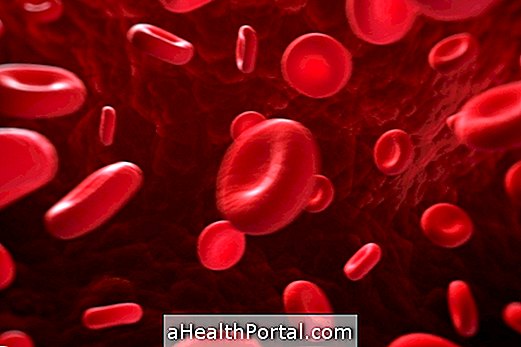Shrimp allergy is a potentially dangerous situation as it can prevent breathing when it leads to glottal swelling in the throat, causing choking and can lead to death, depending on how long the person is without oxygen.
Thus, in case of a severe allergy to shrimp, with shortness of breath, it is due to:
- Immediately call an ambulance or ask someone to do so by calling 192;
- Lay the person with their backs on the floor, turning them sideways so as not to suffocate if they begin to vomit;
- Loosen tight clothing such as a shirt, tie or belt, for example;
- Start heart massage if breathing stops, until medical help arrives. Learn how to do heart massage properly.


When the person already knows that you have allergy to shrimp, you are likely to have an injection of epinephrine, pen-shaped, in a bag or some pocket, for example. If you can find this pen, it should be applied as quickly as possible on the thighs or the arm, to facilitate breathing.
It is important to know the first aid procedures in shrimp allergy, especially when working in restaurants or if someone with this type of allergy is known. Despite the difficulty in breathing, one should not pierce a person's throat, as there is a very high risk of injury to the structures inside the throat.
What to do in case of a mild allergy
If the person has no shortness of breath but has other allergy symptoms such as swollen or red face, an antiallergic such as Cetirizine or Desloratadine should be used to prevent symptoms from developing and may cause difficulty in breathing.
Initially, the tablet should be placed under the tongue so that it is absorbed more easily and takes less time to take effect. However, since the tablets usually have a very bitter taste, it may not be possible to allow them to melt completely, and the rest can be taken with water.
What symptoms can indicate allergy
Symptoms of shrimp allergy usually begin with:
- Dizziness and tiredness;
- Blood pressure drop;
- Itching and redness on the skin;
- Swelling of the lips or eyelids;
- Swelling of hands, feet, face, and throat.
Generally, people who know they have allergy to shrimp do not eat this type of food, however, it is still possible for them to develop symptoms when they eat something that has been in contact with shrimp proteins because it has been served on the same plate or because traces of seafood, for example.
Learn more about this type of allergy and what foods should be avoided.























